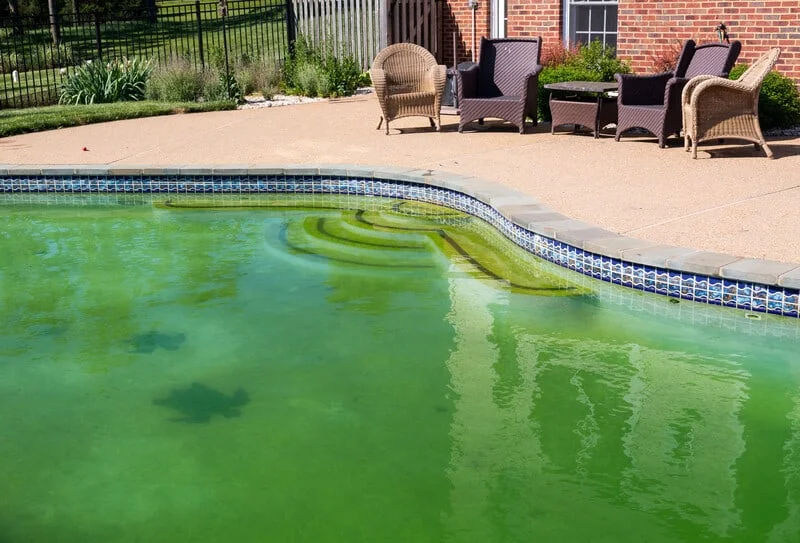What You Need to Know About High Phosphates in Your Pool or Spa
If you own a pool or spa, you understand the delicate balance of keeping the water clean and algae-free. For many pool owners, a swimming pool phosphate test kit is a fact of life to ensure water purity. But regardless of how many tests you’ve performed, you may not know just what phosphates are and how they relate to the health of your pool or spa water.
What Are Phosphates?
Phosphates are a type of organic chemical derived from phosphoric acid. They are present in fertilizers, skin and hair products, leaves, and other pool chemicals. Put simply, phosphates are one of many algae food sources found in water. Some studies show phosphates aren’t even the worst offender, as phosphates only affect algae in pool water at extremely high levels—1,000 parts per billion or more.

Do phosphates cause algae growth?
One of the most common questions about spa and pool algae is, do phosphates cause algae growth? The short answer is maybe.
Because phosphates are a food source for algae, high phosphates in pool water can promote algae growth. But the presence of high phosphates in the pool or phosphates in the hot tub does not determine whether algae will grow or not. Even a spa or pool with no phosphates can grow algae. At the same time, phosphates in a hot tub or pool do not necessarily grow algae. That’s because there are other factors in the process.
Testing for phosphates & algae
Testing kits for chlorine, PH, and other chemical levels in a pool are widely available. However, not all kits contain a way to test for high phosphates in a pool. A swimming pool phosphate testing kit can be purchased separately. You can also take a water sample and have it analyzed by a pool professional. But again, high phosphates in your pool are not a cause for alarm, as phosphates and algae don’t always directly correlate to algae growth in spa or pool water.
Should phosphates be removed?
Some pool professionals and chemical salespeople sell the idea that algae bloom can only be controlled by removing phosphates from your pool. Because of this, many pool owners overspend on swimming pool phosphate remover, thinking that this solves the problem. Because there are other components factored into the relationship between phosphates and algae, merely using a swimming pool phosphate remover is not the answer.

How to address algae if phosphates aren’t the issue
While high levels of phosphates in the hot tub or swimming pool are not ideal, if you address other algae growth components, it’s unlikely to be a concern. Phosphates are inevitable, no matter how much testing you do or how many chemical controls are applied. This is especially true in outdoor pools. So it isn’t necessary to waste money on swimming pool phosphate remover.
Instead, take these simple steps to prevent algae growth:
empty the skimmer and pump baskets frequently
keep the filter clean
vacuum dirt and debris as needed
Also, products like Pool Marvel and Spa Marvel create a less-than-hospitable environment for algae by naturally breaking down and inhibiting components that contribute to algae growth.
The bottom line is that while high phosphates in a pool or phosphates in the hot tub are food for algae, they’re not the sole cause of algae bloom. So spending money on a swimming pool phosphate test kit or swimming pool phosphate remover to eradicate phosphates is unnecessary. In both pools and spas, some phosphate level is inevitable. It’s far more effective to implement good overall pool and spa maintenance habits and include a product that addresses other algae bloom factors. These steps will ensure a clear, attractive, and most importantly, a healthy place for you and your guests to swim and play.









